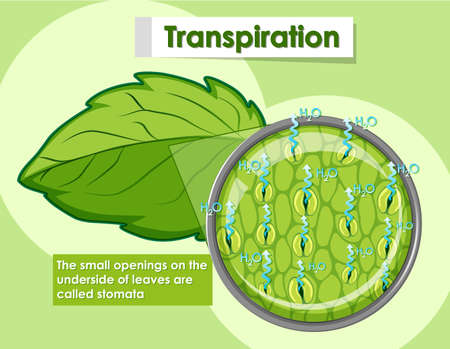1. Understanding the Biotechnology and Life Sciences Landscape in the U.S.
The United States is a powerhouse in biotechnology and life sciences, leading global innovation in medicine, agriculture, and environmental science. If you’re curious about entering this fast-moving field, it helps to first understand how the American biotech and life sciences sectors are structured. Here’s a quick guide to the key players, regional hotspots, and trends shaping the industry today.
Key Players in the U.S. Biotech and Life Sciences Sectors
| Type | Examples | Role |
|---|---|---|
| Major Corporations | Pfizer, Amgen, Genentech (Roche), Gilead Sciences | Drug discovery, vaccine development, large-scale manufacturing |
| Startups & Scale-ups | CRISPR Therapeutics, Moderna (formerly a startup) | Innovative therapies, cutting-edge technology applications |
| Academic Institutions | Harvard, MIT, Stanford, UC San Francisco | Basic research, talent pipeline, spin-off startups |
| Government Agencies | NIH, FDA, CDC | Funding research, regulation and approval of products |
| Industry Groups & Nonprofits | Biotechnology Innovation Organization (BIO), American Society for Microbiology (ASM) | Networking, advocacy, industry standards |
Main Regional Hubs for Biotech & Life Sciences in the U.S.
| Region | Cities/States | Main Focus Areas |
|---|---|---|
| Northeast Corridor | Boston/Cambridge, New York City | Pharmaceuticals, medical devices, genomics |
| San Francisco Bay Area | San Francisco, South San Francisco | Biotech startups, gene editing, digital health |
| San Diego Cluster | San Diego County, California | Molecular diagnostics, biomanufacturing, marine biology |
| Midwest Biotech Belt | Chicago, St. Louis, Minneapolis-St. Paul | Agricultural biotech, food sciences, medical devices |
| Southeast Innovation Zone | Research Triangle Park (NC), Atlanta (GA) | Cancer research, vaccines, agricultural technology |
Current Trends Shaping the Industry
- Pandemic-driven innovation: COVID-19 accelerated vaccine development using mRNA technology and highlighted biotech’s public health role.
- Diversity of career paths: Opportunities abound not just for scientists but also for data analysts, regulatory specialists, marketers, and project managers.
- Sustainability & green biotech: There’s growing investment in bio-based materials and sustainable agriculture solutions.
- Mergers & acquisitions: Big companies often acquire innovative startups to stay competitive and bring new therapies to market faster.
Your First Step Forward?
If you’re thinking about launching your biotech or life sciences journey in America—whether as a student or job seeker—it pays to know who’s who and where the action is. Watch these hubs and keep up with trends to find your best fit in this exciting field.
2. Essential Skills and Education for Breaking In
Jumping into biotechnology and life sciences in the U.S. can feel overwhelming, but with the right mix of education and skills, you’ll be ready to impress employers and start your journey in this booming industry. Here’s what you need to know about degrees, certifications, and technical skills that will set you up for success.
Key Degrees and Educational Paths
Most entry-level roles in biotech and life sciences require at least a bachelor’s degree. Here are some common majors:
| Degree | Typical Careers |
|---|---|
| Bachelor’s in Biology, Biochemistry, or Biotechnology | Lab Technician, Research Assistant, Quality Control Analyst |
| Bachelor’s in Chemical Engineering or Bioengineering | Process Engineer, Manufacturing Associate |
| Master’s or PhD in Life Sciences fields | Research Scientist, Project Manager, Regulatory Affairs Specialist |
If you want to move up or specialize further, graduate degrees (MS or PhD) can open doors to advanced research and leadership positions.
Certifications That Boost Your Resume
Certifications aren’t always required, but they can help you stand out—especially if you’re changing fields or don’t have direct experience. Popular options include:
- American Society for Clinical Pathology (ASCP)
- Certified Biological Safety Professional (CBSP)
- Project Management Professional (PMP) for those interested in biotech project management roles
- Biotechnology Certificate Programs offered by many U.S. community colleges and universities (often available online or part-time)
Must-Have Technical Skills in U.S. Biotech Jobs
The most in-demand skills can vary depending on your focus area, but here are a few that show up often in job postings:
- PCR and DNA sequencing techniques
- Cell culture and microscopy
- Data analysis with Excel or specialized software (like R or Python)
- Good Laboratory Practices (GLP) and Good Manufacturing Practices (GMP)
- Familiarity with lab automation tools and equipment
- Strong written and verbal communication—being able to present data clearly matters!
Soft Skills Employers Value
You’ll also want to build on these “people” skills:
- Problem-solving mindset—think like a scientist!
- Teamwork—it’s almost always collaborative work in labs and projects.
- Adaptability—biotech evolves quickly; being flexible is key.
- Attention to detail—mistakes can be costly in experiments.
How to Start Building Your Qualifications Today
- Take free online courses: Platforms like Coursera, edX, and Khan Academy offer introductory science classes.
- Pursue internships: Even unpaid lab assistant positions provide valuable hands-on experience.
- Join professional organizations: Groups like the American Society for Biochemistry and Molecular Biology (ASBMB) offer networking and learning opportunities.
- Create a LinkedIn profile: Highlight relevant coursework, lab projects, volunteer work, and any certifications—even if you’re just starting out!
The bottom line? Focus on getting the right education, sharpen both technical and soft skills, and look for ways to show your passion for science outside the classroom. That’s how you’ll make your mark in America’s fast-growing biotech and life sciences fields.

3. Network Like a Pro: Connecting with Industry Insiders
Breaking into biotechnology and life sciences in America is about more than just having the right degree. Networking with professionals in the field can open doors, provide mentorship, and help you discover job opportunities that aren’t posted online. Here’s how to get started:
Practical Networking Tips
- Attend Industry Events: Look for conferences, seminars, and career fairs—both local and national. These are great places to meet people who work in your area of interest.
- Use LinkedIn: Keep your profile up-to-date and reach out to alumni from your school or professionals at companies you admire. Don’t be shy about asking for an informational interview.
- Get Involved on Campus: Join biotech clubs or organizations at your university. Student chapters often host guest speakers and networking events.
Finding Mentors
A mentor can give you insider advice, introduce you to their network, and help you navigate career decisions. Here’s how to connect with potential mentors:
- Start by reaching out to professors whose research interests align with yours.
- Connect with alumni who have careers you admire. Most are happy to offer advice if you ask politely and respect their time.
- If you intern somewhere, ask a supervisor or senior colleague for guidance—they’ve been where you are!
Professional Organizations to Join
Membership in professional organizations helps you stay updated on industry trends, access exclusive job boards, and participate in training programs. Here are some top groups for biotech and life science professionals:
| Organization | Who Should Join? | Main Benefits |
|---|---|---|
| BIO (Biotechnology Innovation Organization) | Students & Professionals | Industry news, conferences, advocacy |
| ASM (American Society for Microbiology) | Microbiology Students & Pros | Networking, journals, certifications |
| SIMB (Society for Industrial Microbiology & Biotechnology) | Industrial Biotech Focused | Workshops, job postings, events |
| SfN (Society for Neuroscience) | Neuroscience Researchers & Students | Annual meetings, resources, mentoring |
How to Make the Most of Your Memberships
- Attend as many events as possible—even virtual ones count!
- Volunteer for committees or projects; it’s a great way to meet new people.
- Use member directories to connect directly with people working at your dream companies.
Your Next Steps
The more connections you make now, the easier it will be to find research opportunities, internships, and even full-time jobs down the road. Remember: in America’s fast-paced biotech scene, who you know can be just as important as what you know.
4. Gaining Experience: Internships, Volunteering, and Entry-Level Jobs
Breaking into the world of biotechnology and life sciences in the U.S. is all about hands-on experience. Employers want to see that you can do more than ace exams—you need to show you’ve worked in real labs, handled equipment, and learned teamwork. Here’s how you can start building your resume and get your foot in the door.
Why Experience Matters
In America’s fast-paced biotech industry, hands-on experience is often just as important as classroom learning. Whether it’s a paid internship or volunteer work, practical exposure helps you:
- Build valuable lab skills
- Grow your professional network
- Discover which areas of biotech spark your interest
- Show future employers that you’re serious about the field
Popular Pathways to Gain Experience
You don’t have to wait until graduation to start gaining relevant experience. There are several ways to get involved while you’re still in school or even right after:
| Pathway | Description | Where to Find Opportunities |
|---|---|---|
| Internships | Short-term positions (usually summer or semester-long) where you work at a biotech company or research lab, often for college credit or pay. | University career centers, company websites, LinkedIn, Handshake |
| Research Assistant Roles | Work alongside professors or scientists on ongoing projects, either during the school year or over the summer. | Department bulletin boards, faculty advisors, university job portals |
| Volunteering | Help out in academic labs, science museums, STEM outreach programs, or local hospitals—often flexible and great for networking. | Nonprofit organizations, hospital volunteer offices, community science events |
| Cooperative Education (Co-op) Programs | A formal program where students alternate between academic study and full-time paid work in their field—popular at some U.S. colleges. | University co-op offices, academic advisors |
| Entry-Level Jobs | Positions such as laboratory technician or quality control assistant that require less experience but offer plenty of learning opportunities. | Company career pages, Indeed, Glassdoor, campus job fairs |
Tips for Landing Your First Role
- Tweak Your Resume: Highlight any coursework or class projects that relate to biotech or lab skills.
- Network Smart: Attend campus career fairs and reach out to alumni working in the field—they love helping newcomers!
- Be Open-Minded: Don’t hesitate to take on unpaid roles or part-time gigs at first. Experience is key!
- Show Initiative: Ask professors if they need help in their labs—sometimes these opportunities aren’t widely advertised.
- Pursue Certifications: Consider short courses in safety training or data analysis tools; they add weight to your application.
The American Advantage: Cooperative Education Programs
If you’re studying at a college with a co-op program (like Northeastern University), jump on it! Co-ops blend real-world work with academic learning and often lead directly to job offers after graduation. These programs are uniquely American and highly valued by employers looking for experienced graduates.
Your Next Step?
No matter where you start—from volunteering at a local science center to landing a competitive internship—each role builds your confidence and skill set. The sooner you dive into hands-on experiences, the faster youll find your place in America’s thriving biotechnology and life sciences landscape.
5. Navigating the Job Market: Resumes, Interviews, and Job Search Strategies
Landing your first job in biotechnology or life sciences in the U.S. can feel overwhelming, but with a smart approach and some insider tips, you can stand out from the crowd. Here’s how to make your resume shine, ace your interviews, and find the best opportunities in these booming fields.
Biotech & Life Sciences Resume Best Practices
Your resume is often your first impression. In biotech and life sciences, hiring managers look for specific skills and clear evidence of hands-on experience. Here’s what to focus on:
| Section | What to Include | Tips |
|---|---|---|
| Contact Info | Name, phone, professional email, LinkedIn profile | Make sure details are up to date and professional |
| Summary/Objective | Short statement about your background and goals | Mention your passion for biotech/life sciences and key strengths |
| Skills | Technical (e.g., PCR, CRISPR), data analysis, teamwork | List both lab and soft skills relevant to the job posting |
| Experience | Research projects, internships, jobs (with results!) | Use action verbs; highlight achievements with numbers if possible |
| Education | Degrees, certifications, relevant courses or workshops | Add GPA if above 3.5; include honors or awards |
| Publications/Presentations (if any) | Papers, posters, talks at conferences | Impressive even for entry-level roles! |
Acing the Interview: What Employers Want to Hear
The interview is your chance to show not just what you know but also how you think and collaborate. Here’s how to prepare:
Behavioral Questions (Soft Skills)
- Teamwork: Be ready with examples of working in diverse teams.
- Problem-solving: Share a time when you overcame a challenge in a lab or project.
- Communication: Explain complex science simply—pretend you’re talking to a friend who isn’t a scientist.
Technical Questions (Hard Skills)
- Be specific: If they ask about PCR or cell culture techniques, describe protocols you’ve actually used.
- Troubleshooting: Talk about how you handled experiments that didn’t go as planned.
- Lifelong learning: Mention new skills or technologies you’re currently exploring (like bioinformatics or AI tools).
Job Search Strategies That Work in the U.S.
The Power of Networking
- LinkedIn: Connect with alumni from your school or people working at companies you admire.
- Professional Societies: Join groups like the American Society for Microbiology or Biotechnology Innovation Organization—memberships often offer job boards and events.
- Coffee Chats: Don’t be afraid to ask someone for an informational interview! Most professionals are happy to share advice.
Where to Find Biotech & Life Sciences Jobs?
| Resource Type | Description / Example Sites |
|---|---|
| Niche Job Boards | BIO.org Jobs, ScienceCareers.org |
| Mainstream Job Boards | Indeed, Glassdoor, LinkedIn Jobs |
| Career Fairs & Conferences | BIO International Convention, local university career fairs |
Tactics for Standing Out from Other Applicants
- Tailor Every Application: Customize your resume and cover letter for each job—use keywords from the job description.
- Create a Portfolio: Build an online portfolio showcasing research posters, code samples (for bioinformatics), or project summaries.
- Email Follow-Ups: After applying or interviewing, send a thank-you email that mentions something specific discussed in your conversation.
The U.S. biotech and life sciences industries are dynamic—employers appreciate candidates who are curious, adaptable, and proactive. With these strategies and a little persistence, you’ll be well on your way to launching a rewarding career!
6. Growing Your Career: Continuous Learning and Advancement
In the fast-moving world of biotechnology and life sciences, your career growth depends on more than just landing that first job. The U.S. biotech industry values professionals who keep learning and adapting to new scientific discoveries. Here’s how you can keep moving forward in this dynamic field.
Professional Development Opportunities
Staying active in your professional community helps you expand your network and gain new skills. Consider joining organizations like the American Society for Microbiology or the Biotechnology Innovation Organization (BIO). These groups offer conferences, webinars, certification programs, and networking events where you can learn from experts and connect with others in your field.
Popular Professional Organizations
| Organization | Focus Area | Benefits |
|---|---|---|
| American Society for Microbiology (ASM) | Microbiology, Research | Workshops, Networking, Journals |
| Biotechnology Innovation Organization (BIO) | Biotech Industry | Conferences, Advocacy, Industry News |
| American Association for the Advancement of Science (AAAS) | General Science | Career Resources, Events, Publications |
Pursuing Further Education
If you want to move up or specialize, consider earning an advanced degree. In the U.S., many biotech professionals pursue a master’s or Ph.D., but there are also certificate programs and online courses focused on specific technologies or business skills. Schools like MIT, Stanford, and Johns Hopkins offer flexible options for working adults. Many employers even help pay for continued education.
Common Paths for Continuing Education
| Option | Description | Typical Time Commitment |
|---|---|---|
| Masters Degree (MS/MA) | Deepens technical expertise or management skills | 2 years full-time or part-time options available |
| Ph.D. | Prepares for research leadership or academia roles | 4–7 years full-time |
| Certificate Programs | Focus on specialized topics (e.g., CRISPR, data analysis) | A few months to 1 year part-time or online |
| Workshops & Short Courses | Intensive skills training for current trends/technologies | A few days to weeks; often offered online or in-person locally |
Keeping Up with Scientific Innovations
The life sciences landscape is always changing—think gene editing, personalized medicine, and AI-powered drug discovery. Make it a habit to read science news from trusted sources like Nature Biotechnology, Science Magazine, Fierce Biotech, BioSpace, and university newsletters. Podcasts and YouTube channels hosted by scientists can also help you stay current without spending hours reading dense papers.
Your Action Plan for Growth:
- Join at least one professional organization relevant to your interests.
- Attend workshops or conferences annually—many are now virtual!
- Create a routine for reading industry news each week.
- Consider taking an online course every year to refresh your skillset.
No matter where you start in biotechnology or life sciences, continuous learning opens doors to new opportunities and exciting projects across America’s most innovative industries.


